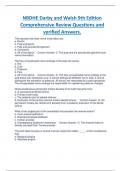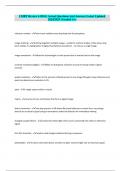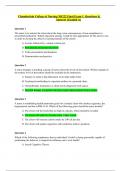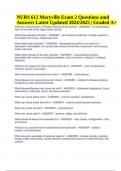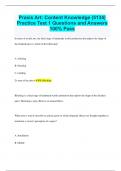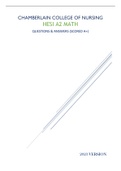Exam (elaborations)
NBDHE Darby and Walsh 9th Edition Comprehensive Review Questions and verified Answers.
- Course
- Institution
NBDHE Darby and Walsh 9th Edition Comprehensive Review Questions and verified Answers.NBDHE Darby and Walsh 9th Edition Comprehensive Review Questions and verified Answers.NBDHE Darby and Walsh 9th Edition Comprehensive Review Questions and verified Answers.NBDHE Darby and Walsh 9th Edition Com...
[Show more]
